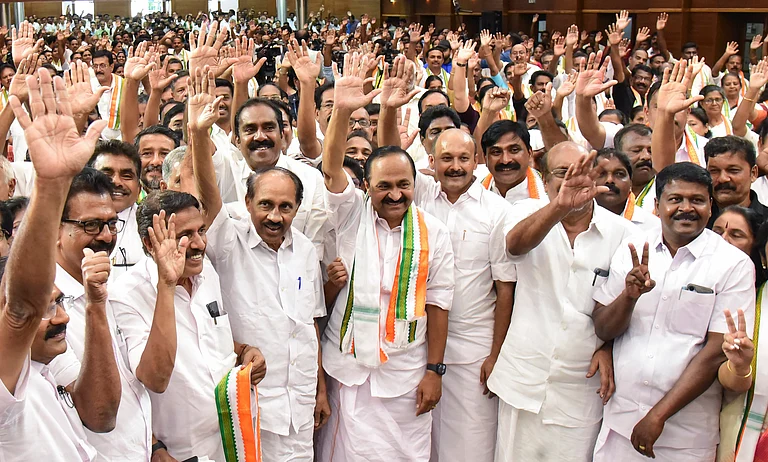It’s been over five months since the world has been battling Coronavirus pandemic. While the SARS-Cov-2 infection has primarily caused an avalanche in the medical infrastructure, it has also significantly affected other sectors of the economy. One such adversely affected sector is banking.
On March 27, the Reserve Bank of India (RBI) launched the Covid-19 regulatory package to rescue the economy wherein it reduced the cash reserve ratio (CRR) by 100 bps and repo rate by 75 bps along with a three-month loan moratorium followed by other systematic rate cuts and regulatory easing. On May 17, the government announced an economic stimulus package of Rs. 20 lakh-crore, which was divided into five tranches addressing different facets of the economy and inclusive of Rs 8.1 lakh crore worth of liquidity measure from the RBI. The efficacy of these measures is rather similar to all the Covid-19 vaccine candidates, i.e. uncertain and speculative. Irrespective of how effective or deteriorative these packages turn out for the upliftment of the economy, they are bound to exert much stress over the banking sector.
The impact of the pandemic, lockdown, and counteractive measures on banks can be largely assessed under three categories—Net Interest Margins, Retail and Corporate lending, and Gross Non-Performing Assets (GNPA).
Net Interest Margins
Net Interest margin (NIM) compares the net interest income generated by a financial institution from its credit products to the interest paid to its depositors and creditors. NIM is a profitability indicator that assesses the institution’s financial health over a period of time. The NIM of a bank is analogous to the operating margin of an industrial firm. The Net Interest Margin is subject to various internal and external factors like Net Interest Income (NII), Capital Adequacy Ratio (CAR), Current and Savings Account Ratio (CASA), size, and quality of bank assets, operating profits, the repo rate, and the GDP. All the response measures taken by the RBI and government will cause changes to the above factors. The magnitude of change is a more quantitative approach to banking, but as per available banking literature, three factors—CASA ratio, Net Interest Income, and GNPA have been consequential to NIM levels. It is observed that banks have amassed sufficient funds due to lack of credit off-take (given the economic slump), combined with incessant rate cuts in the SLR and CRR. Now, that banks sit on a huge amount of cash in their books, invariably the costs of deposit within banks will rise. This situation is detrimental to the CASA ratio, which is the ratio of deposits in the current account to a savings account. This ratio is a measure of low cost of funds as banks usually pay no interest on current accounts and very low interest on saving accounts, hence the higher the better. As the cost of deposits increase, customers and savers will be reluctant to deposit their money in banks, reducing the CASA ratio. The fall in the CASA ratio is coupled with a declining Net Interest Income (NII), the interest income banks earn from their lending activities after adjusting for what they owe. The amount of NII in a bank is directly proportional to the number of loans serviced by the banks, further lowering the NIM. High levels of GNPA are detrimental to NIM as they deteriorate bank assets and decrease potential NII.
Retail and Corporate Lending
According to a report published by S&P Global Ratings, “The global GDP would contract by 3.8% this year, reflecting a deeper and longer hit to emerging markets, led by India”. It also stated that the Covid-led recession would weigh on credit metrics well into 2023 due to lost outputs and increased debt burdens, threatening corporate solvency.
It is quite evident that production processes in Indian and global enterprises have taken a serious hit due to the pandemic. Since the lockdown, production houses have been out of business due to a huge demand slump. The fall in demand is not very sudden, the Indian economy has been struggling to push consumer demand and private investment for the past three quarters. The lockdown has further aggravated this demand crisis and harmed the production side of the consumption cycle too. This has resulted in many complications like declining corporate profitability, inability to repay loans, mass lay-offs, etc. The worst-hit sectors include the likes of textile, automotive, aviation and Infrastructure, due to a variety of reasons ranging from disruption of labour supply to high-interest payments and lack of sales. Interestingly, these are also the industries that are heavily debt-ridden (due to bank loans or other debt instruments). From a banking perspective, there are two ways to look at this problem—an explosion of NPAs and minimal lending activity by industries. Businesses resort to cost-cutting measures as generating revenue becomes difficult. They also try to reduce their debt burden as this crisis has rendered them incapable of paying their debt obligation. Hence, most business houses are either reluctant to engage in lending activities or those who engage in lending are bad creditors and have a high possibility of defaulting. Either way, banks are at a loss. Apart from businesses, the general public is also reluctant to borrow loans, due to loss of jobs or subsidised salaries and incomes. According to a report, more than 122 million Indians lost their jobs in the month of April. In such times, the bank is unable to service loans which directly impacts their NII, although the RBI has taken measures towards liquidity infusion by slashing CRR and SLR rates to ensure cheaper credit to borrowers, in most cases, this has worsened the situation. The inability to borrow has become so dominant that banks are now sitting on huge amounts of cash. For instance, SBI, the largest public sector bank, posted a liquidity ratio of 143% in contrast to the 80% normal. This situation is extremely detrimental to the bank's profitability and their ability to support the economy when it charts its way towards recovery.
Gross Non-Performing Assets (GNPA)
Non-Performing Assets (NPA), refers to the classification of loans that are in default or arrears. These have been a troublemaker in the banking sector for quite sometime now. The rising levels of NPA in banks since the financial crisis has caused serious damage to the economy and resulted in turmoil of major institutions like YES Bank. According to RBI’s Financial Stability report, the gross NPA in the country will rise to 9.9% by September, which is supposed to be the highest among emerging economies. Inevitably, Covid crisis will inflate the NPA levels in the economy. According to a report published by CRISIL, NPAs in the country will stand at 11-11.5% for the year 2021. The report also states that it expects Indian GDP to contract by four per cent. Due to loss of economic activity, borrowers will not be able to generate sufficient revenue or income to meet their debt obligations resulting in defaults and higher bad loans in bank balance sheets. According to the sector-wise data released by the RBI, a collective amount of Rs.12 lakh crore is the loan outstanding as on January 2020 from industries that are worst-affected by the pandemic. High NPA levels not only affect a bank’s profitability but also significantly reduces their lending capability by reducing the amount of capital available for lending purposes and forcing them to increase the amount of contingency reserve for NPAs. While the NPA risk on banks is sky-high, relief measures like the three-month loan moratorium and the credit availability scheme for MSMEs continue to exert more pressure.
The future of the banks in India looks pessimistic and in desperate need of revival through appropriate policy measures.
(The author is a student of Economics and Finance at Delhi College of Arts and Commerce, University of Delhi. Views expressed are personal.)





















